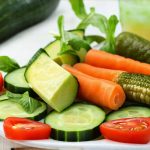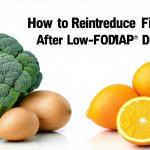Gastroenteritis, commonly known as “stomach flu,” is an incredibly common ailment affecting people of all ages. While often self-limiting, meaning it typically resolves within a few days to a week, the recovery process can be surprisingly challenging and even prolonged if not managed correctly. Many individuals focus solely on surviving the acute phase – the vomiting, diarrhea, and dehydration – but underestimate the importance of carefully reintroducing food after symptoms subside. A hasty return to a normal diet is frequently what triggers a frustrating relapse of nausea, discomfort, and setbacks in recovery, turning a quick illness into a lingering ordeal.
The digestive system, after being ravaged by inflammation caused by viruses, bacteria, or parasites, needs time to heal and rebuild its functionality. The gut microbiome – the complex community of beneficial bacteria residing in our intestines – is particularly vulnerable during gastroenteritis. This disruption significantly impacts digestion and absorption capabilities. Simply stopping the vomiting and diarrhea isn’t enough; true recovery hinges on nourishing the system back to health with a gradual, thoughtful approach to food reintroduction that prioritizes easily digestible options and allows the gut microbiome to repopulate and restore its vital functions. Ignoring this crucial step can lead to persistent symptoms and even long-term digestive issues. Understanding microbiome knowledge is essential for a successful recovery.
Understanding the Gut’s Recovery Process
The intestinal lining is significantly affected during gastroenteritis. The inflammation damages the villi – tiny finger-like projections in the small intestine responsible for nutrient absorption. This damage reduces the surface area available for absorbing nutrients, leading to malabsorption and contributing to ongoing symptoms like diarrhea even after the initial infection has cleared. Reintroducing food too quickly overwhelms this compromised system, further irritating the intestinal lining and exacerbating inflammation. It’s not just about avoiding triggering nausea; it’s about actively supporting the healing process.
Furthermore, gastroenteritis often causes a temporary deficiency in lactase, the enzyme needed to digest lactose (milk sugar). This can lead to secondary lactose intolerance, even in individuals who previously tolerated dairy without issue. Similarly, fat malabsorption is common, making high-fat foods difficult to tolerate. Understanding these physiological changes is key to building a recovery diet that minimizes stress on the digestive system and maximizes nutrient absorption. The body needs time to rebuild its enzymatic capacity and restore normal intestinal function before returning to a wider range of dietary choices.
The gut microbiome plays an integral role in this process. Gastroenteritis significantly disrupts the balance of bacteria in the gut, reducing beneficial species and potentially allowing harmful ones to flourish. This imbalance affects digestion, immunity, and overall health. A carefully chosen diet during recovery can help encourage the growth of beneficial bacteria and restore a healthy gut environment, promoting long-term digestive well-being. You may even consider using probiotics as part of your recovery process.
The BRAT Diet & Beyond: Progression Strategies
The traditional “BRAT” diet – bananas, rice, applesauce, and toast – has been a go-to recommendation for decades following gastroenteritis. While these foods are generally easy to digest and can help bind the stool, relying solely on them for an extended period isn’t ideal. They lack essential nutrients needed for recovery and don’t actively support gut microbiome restoration. The BRAT diet should be considered a starting point, not a long-term solution.
A more nuanced approach involves a phased reintroduction of foods, beginning with the blandest options and gradually increasing complexity as tolerance improves. This progression typically follows these stages: 1) Clear liquids (water, electrolyte solutions), 2) Oral rehydration solutions to replenish lost fluids and electrolytes are critical during the initial phase, even before introducing solid foods; 3) Easily digestible carbohydrates (the BRAT diet foods); 4) Lean proteins (boiled chicken or fish, tofu); 5) Low-fat cooked vegetables (carrots, potatoes, green beans); 6) Small amounts of healthy fats (avocado, olive oil). The key is to listen to your body and adjust the pace based on individual tolerance. If nausea returns, step back to a previous stage.
It’s also important to consider incorporating probiotic-rich foods or supplements during recovery to help restore the gut microbiome. Fermented foods like yogurt (if tolerated), kefir, sauerkraut, and kimchi can be beneficial, but introduce them cautiously. Probiotic supplements may offer a more controlled approach, but always consult with a healthcare professional before starting any new supplement regimen.
Managing Nausea During Food Reintroduction
Nausea is the most common obstacle during gastroenteritis recovery. Several strategies can help minimize it:
- Small, frequent meals: Instead of three large meals, opt for six to eight smaller meals throughout the day. This reduces the burden on the digestive system and prevents overwhelming the gut.
- Slow eating: Eating too quickly can exacerbate nausea. Take your time, chew thoroughly, and savor each bite.
- Avoid strong odors: Strong smells can trigger nausea in sensitive individuals. Ensure good ventilation and avoid cooking foods with overpowering aromas during recovery.
- Ginger: Ginger has been shown to have anti-nausea properties. Sip on ginger ale (real ginger ale, not just flavored soda) or consume crystallized ginger. Always check with your doctor before using ginger if you are taking any medications.
- Hydration is key: Dehydration can worsen nausea. Continue sipping on fluids throughout the day, even if you’re struggling to keep food down.
The Role of Hydration and Electrolytes
Dehydration is a significant concern during gastroenteritis due to fluid loss from vomiting and diarrhea. Maintaining adequate hydration is essential for recovery and preventing complications. Water is important, but electrolyte solutions are crucial. Electrolytes – sodium, potassium, chloride, and magnesium – are lost through vomiting and diarrhea and need to be replenished to maintain proper bodily functions.
Oral rehydration solutions (ORS) specifically formulated with the right balance of electrolytes are ideal. Avoid sugary drinks like juice or soda, as they can worsen diarrhea. Signs of dehydration include decreased urination, dark urine, dizziness, fatigue, and dry mouth. If you suspect severe dehydration, seek medical attention immediately. You might also consider detecting delayed food reactions to better understand your body’s response to different foods.
Identifying Trigger Foods & Long-Term Considerations
Once food reintroduction is underway, pay close attention to which foods trigger symptoms. Common triggers include:
- Dairy products: Due to temporary lactose intolerance.
- Fatty foods: Difficult to digest and can exacerbate diarrhea.
- Spicy foods: Can irritate the digestive system.
- Caffeine and alcohol: Can worsen dehydration and inflammation.
- Artificial sweeteners: May disrupt gut microbiome balance.
Keeping a food diary can help identify these triggers and guide dietary choices during recovery. Practical methods for tracking your triggers are available to help with this process. Long-term, prioritize a diet rich in fiber (once tolerated), probiotics, and prebiotics to support ongoing gut health. A healthy gut is not just about recovering from illness; it’s about maintaining overall well-being. Consider incorporating fermented foods into your regular diet and limiting processed foods, sugar, and unhealthy fats. If digestive issues persist beyond a few weeks, consult with a healthcare professional to rule out underlying conditions or chronic digestive disorders. You could also benefit from learning how to rotate foods to avoid sensitivities and fatigue.


















